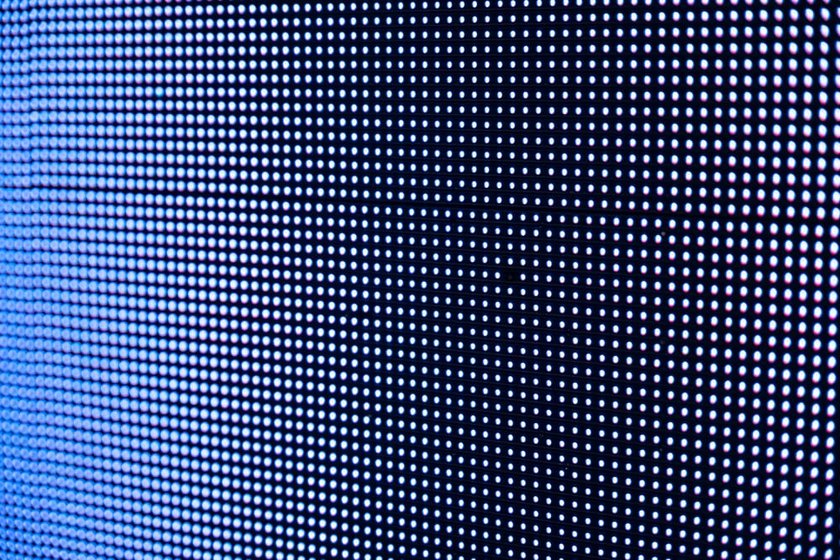Ever looked closely at a digital photo or screen and wondered what makes up the image? You’re seeing thousands, sometimes millions, of tiny dots called pixels. But what are pixels made of?
In this post, we’ll explore the simple yet fascinating elements that build every digital image you see! Let’s start!
What is a Pixel
 A pixel, short for "picture element," is the tiniest part of a digital image. These picture elements line up in rows and columns on screens like your computer, tablet, or phone to make up the images you see.
A pixel, short for "picture element," is the tiniest part of a digital image. These picture elements line up in rows and columns on screens like your computer, tablet, or phone to make up the images you see.
Pixels are crucial not just in digital photography but also in web design and computer graphics. They work by encoding visual information, allowing for precise and sharp images essential for everything from beautiful photographs to crisp website designs. When you step back from individual pixels, they blend together to form a complete, detailed picture — much like looking at a mosaic or a structure built from Legos!
Advanced yet easy-to-use photo editor
Get Luminar Neo NowPixels Through Time
 They started out as big, blocky dots on the earliest digital screens. Back then, images were pretty basic and not very clear because the technology just wasn't that advanced.
They started out as big, blocky dots on the earliest digital screens. Back then, images were pretty basic and not very clear because the technology just wasn't that advanced.
Over time, as technology got better, so did pixels. They became smaller, which meant more could fit on a screen. This change made the images we see on screens much clearer and more detailed. Along with better pixels, improvements in how computers store and process information also helped make images sharper and more complex.
The video game and movie industries played a big part in advancing pixel technology. They needed better graphics for games and movies, so they pushed the development of better picture elements. Thanks to these industries, the improvements in technology have helped make all the digital images we see today much better!
Now, pixels are a crucial part of all digital screens, from the sharp displays on the newest smartphones to the high-definition monitors used by professionals in graphic design and art. Thanks to the evolution, digital images today are incredibly detailed and lifelike!
How Pictures Are Created
 A pixel is essentially a single point in a digital image. When many of them come together, they form the complete picture you see on a screen. Each pixel displays a color, which is typically created by mixing different levels of red, green, and blue (RGB) light. The specific shade of color each of them shows is determined by the exact mix of these RGB values.
A pixel is essentially a single point in a digital image. When many of them come together, they form the complete picture you see on a screen. Each pixel displays a color, which is typically created by mixing different levels of red, green, and blue (RGB) light. The specific shade of color each of them shows is determined by the exact mix of these RGB values.
This process of assigning color to each pixel is managed by graphics processing units (GPUs). These powerful processors handle the complex calculations needed to determine the right RGB mix for each picture element across the image. This coordination between the GPU hardware and its software allows for everything from the static pictures we see in photos and on websites to the moving images required for videos and gaming!
Exclusive Tools of Endless Possibilities in One AI Editor
EXPLORE NOW!Essential Terminology
 1. Pixelation
1. Pixelation
When images are enlarged past the point their resolution supports, the pixels become evident as coarse blocks. This degradation is typically unwanted but can serve a purpose in styles like pixel art or vintage video games. Techniques such as anti-aliasing are employed to alleviate pixelation effects, enhancing image smoothness. You can try the image depixelizer in Luminar Neo, so pixelation won’t be an issue for you anymore!
2. Resolution
Resolution is the measure of pixel quantity in an image and is directly tied to its clarity and detail level. More picture elements within the same space mean a crisper, more intricate visual output, which is particularly important in digital photography and high-definition displays. So, you can make images 4k to show all of the tiny details of your photo!
3. Pixel Density
Also known as pixels per inch or PPI, pixel density describes how many pixels are contained within an inch of a display surface. High PPI results in sharper images, which is critical for ensuring that digital content appears clear and detailed across different viewing devices.
4. Megapixel
What is a megapixel in a camera? Used primarily to denote camera resolution, a megapixel represents a million pixels. This metric helps gauge the total picture quality a camera can offer, with higher megapixel counts indicating the capability to capture finer details.
5. Dead Pixel
A dead pixel is one that shows no color and remains black, often due to manufacturing flaws or damage. These elements fail to display any change when the image or screen content updates.
6. Stuck Pixel
This occurs when a pixel is locked, showing one color or just white, due to malfunctioning subpixels. Unlike dead pixels, stuck ones are slightly functional as they still emit light and may sometimes return to normal operation after being cycled through colors with specialized software. Read more about stuck pixel VS dead pixel in our previous post!
7. Bit Depth
Bit depth, or pixel depth, refers to how many bits of data are used to represent the color of each element. Increasing bit depth enhances the potential color range of an image, making the colors richer and transitions between them smoother.
Understanding these concepts gives you a better appreciation of how digital images are created and displayed!
Quick Facts You Should Know
 1. Understanding Image Size
1. Understanding Image Size
Digital images are measured in pixels. For instance, an image might be described as 1000 x 750 pixels, meaning it's 1000 pixels wide and 750 pixels tall. Stretching this image beyond these dimensions usually makes it look fuzzy because it has a fixed number of pixels.
2. Size Can Vary
Pixels themselves don't come in a standard size. How big they appear depends on the screen's resolution where you view them. That's why the same image can look different in size on two devices, even though it has the same number of picture elements.
3. How File Types Affect Pixels
The type of file you save your photo as can impact its quality. JPEGs compress the pixel data to reduce file size, which can blur images slightly with each save. PNGs maintain all data and allow for transparent backgrounds.
4. More Pixels, Bigger Files
The more pixels an image contains, the larger its file size. This is important for web designers to remember because larger files take longer to load on a website. Selecting the right amount for the job can help keep your website speedy.
Conclusion
 In this post, we've unpacked the role of picture elements in digital images. Starting with the simple pixel definition as the tiniest part of a digital image, we explored how these tiny units come together to form the clear, colorful pictures we see on digital screens. Whether it’s your smartphone, a computer monitor, or a TV, pixels are at work behind the scenes, defining the sharpness and detail of every image.
In this post, we've unpacked the role of picture elements in digital images. Starting with the simple pixel definition as the tiniest part of a digital image, we explored how these tiny units come together to form the clear, colorful pictures we see on digital screens. Whether it’s your smartphone, a computer monitor, or a TV, pixels are at work behind the scenes, defining the sharpness and detail of every image.
Next time you enjoy a vivid photo or a crisp graphic, remember the small but powerful pixel making it all possible!



 1. Pixelation
1. Pixelation 1. Understanding Image Size
1. Understanding Image Size
